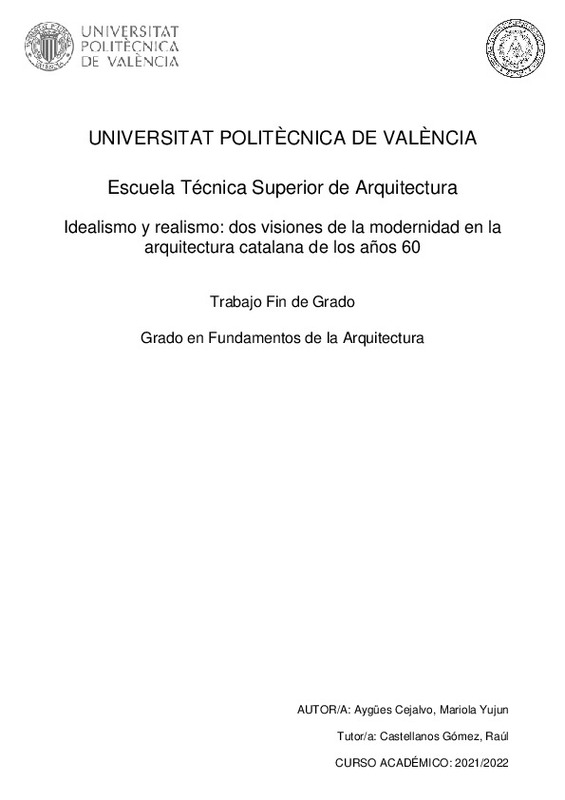|
Resumen:
|
[ES] El movimiento moderno eclosiona en la arquitectura catalana de la década de los sesenta del siglo XX a través de dos escuelas: el idealismo y el realismo que representan formas distintas de concebir el proyecto ...[+]
[ES] El movimiento moderno eclosiona en la arquitectura catalana de la década de los sesenta del siglo XX a través de dos escuelas: el idealismo y el realismo que representan formas distintas de concebir el proyecto arquitectónico vinculadas a parámetros culturales, sociológicos y técnicos. Los realistas, desde el pragmatismo, reivindican una arquitectura ¿del ladrillo¿ con una vocación social que responde a criterios de austeridad constructiva y funcionalidad. Oriol Bohigas, Federico Correa y Alfonso Milá son la triada de arquitectos que representan la línea oficial de la Escuela de Barcelona que se sustancia, fundamentalmente, en proyectos de viviendas destinados a la burguesía catalana. Por su parte, los idealistas son herederos de una mirada vanguardista vinculada a corrientes centroeuropeas con una visión más plástica y estética cuyo desarrollo frustra la Guerra Civil y el consiguiente aislamiento de España. Guillermo Giráldez, Pedro López Iñigo y Xavier Subías son los principales representantes de esta corriente que hacen del edificio de la Facultad de Derecho de Barcelona el paradigma de su proceso creativo. Realismo e idealismo se interpelan, en definitiva, por una arquitectura que huye del apriorismo y se enraíza en la experiencia cotidiana donde, en palabras del Rafael Moneo, recae el campo de acción del arquitecto. Este trabajo analiza las diferencias y las similitudes entre dos escuelas simultáneas en el tiempo y en el espacio, dos búsquedas que beben de la modernidad y que han contribuido desde enfoques distintos, pero no excluyentes, a enriquecer la arquitectura española contemporánea.
[-]
[EN] The modern movement flourished in Catalan architecture in the sixties of the twentieth century through two schools: idealism and realism, which represent different ways of conceiving the architectural project linked ...[+]
[EN] The modern movement flourished in Catalan architecture in the sixties of the twentieth century through two schools: idealism and realism, which represent different ways of conceiving the architectural project linked to cultural, sociological, and technical parameters. The realists, based on pragmatism, claim a "brick" architecture with a social vocation that responds to criteria of constructive austerity and functionality. Oriol Bohigas, Federico Correa, and Alfonso Milá are the triad of architects representing the official line of the Barcelona School, essentially based on housing projects destined for the Catalan bourgeoisie. The idealists inherited an avant-garde outlook linked to Central European currents with a more plastic and aesthetic vision. The development of this school was hampered by the Civil War and the consequent isolation of Spain. Guillermo Giráldez, Pedro López Iñigo, and Xavier Subías are the prominent representatives of this trend that makes the building of the Faculty of Law of Barcelona the paradigm of its creative process. Realism and idealism are challenged, ultimately, by an architecture that escapes from apriorism and is rooted in the everyday experience since, in the words of Rafael Moneo, it is where the architect¿s field of action lies. This work analyzes the differences and similarities between two simultaneous schools in time and space, two searches that draw on modernity and that have contributed from different but not exclusive approaches to enrich contemporary Spanish architecture.
[-]
|







